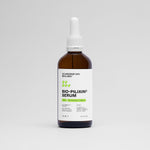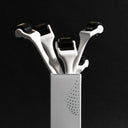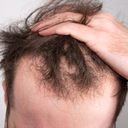Scalp massage has become a popular practice in recent years, often touted for its ability to promote relaxation, improve circulation, and enhance hair growth. However, with the increasing interest in this technique, questions have arisen regarding its impact on hair health. One of the most pressing concerns is whether scalp massage can actually cause hair loss. In this article, we will explore this question in detail, providing insights into the mechanics of scalp massage, its effects on hair follicles, and evidence from both sides of the debate.
Table of content
Does scalp massage cause hair loss?
No, scalp massage does not cause hair loss; in fact, it is generally considered beneficial for hair health. When performed correctly, scalp massage can increase blood circulation to the hair follicles, promoting hair growth and potentially preventing hair loss. However, excessive or aggressive massage can lead to hair breakage or traction alopecia, especially if the hair is pulled or tugged during the process. Overall, gentle and mindful scalp massage is unlikely to result in hair loss and may even contribute to a healthier scalp environment.
To understand the relationship between scalp massage and hair loss, it’s essential to delve deeper into how scalp massage works, its benefits, and the potential risks associated with improper technique.
As your leading source for hair health information over the past 4 years, we never compromise on accuracy. When it comes to your health, you deserve information you can truly rely on - and earning your trust is our top priority.
Here's how Scandinavian Biolabs ensures every piece of content meets the highest standards of accuracy and integrity:
- Credentialed Experts: Our reviewers are actively practicing doctors and medical researchers
- Stringent Reviews: Content undergoes rigorous editing by subject specialists and review by a practicing doctor.
- Evidence-Based: We rely on well-established research from trusted scientific sources like peer-reviewed journals and health authorities.
- Full Transparency: Our editorial standards, writer credentials, reviewer credentials, correction process, and funding are all publicly documented.
- Independent Voice: While we do promote products, we operate in a vacuum to business operations. Our main goal is just an unwavering commitment to providing medically-sound guidance.
You can count on Scandinavian Biolabs to consistently deliver the trustworthy health information you deserve. Read our Editorial Standards.
How does scalp massage work?
Scalp massage involves the manipulation of the scalp tissues through various techniques, such as kneading, rubbing, or applying pressure with the fingertips. This practice stimulates blood flow to the scalp, which can enhance the delivery of essential nutrients and oxygen to hair follicles. Improved circulation may help in revitalizing dormant hair follicles, encouraging healthier hair growth.
Benefits of scalp massage
The benefits of scalp massage extend beyond just hair growth. Here are some of the key advantages:
- Improved blood circulation: Scalp massage increases blood flow, which nourishes hair follicles and promotes healthy hair growth.
- Relaxation and stress relief: Regular scalp massage can reduce stress and tension, which are known contributors to hair loss.
- Product absorption: Massaging the scalp can enhance the absorption of hair care products, making treatments more effective.
- Exfoliation: It can help remove dead skin cells and buildup, leading to a healthier scalp environment.
Potential risks of scalp massage
While scalp massage is generally safe, there are some risks associated with improper techniques. Here are some potential issues to be aware of:
- Excessive force: Applying too much pressure during a massage can damage hair strands, leading to breakage rather than promoting growth.
- Traction alopecia: This form of hair loss occurs when hair is pulled too tightly, which can happen with aggressive massage techniques.
- Scalp irritation: Over-massaging the scalp can lead to irritation or inflammation, especially in those with sensitive skin.
How to perform a scalp massage safely
To maximize the benefits of scalp massage while minimizing risks, follow these simple guidelines:
- Use gentle pressure: Apply light to moderate pressure with your fingertips without tugging or pulling on the hair.
- Focus on the scalp: Concentrate your efforts on the scalp rather than the hair itself to avoid breakage.
- Incorporate oils: Using essential oils, such as rosemary or lavender, can enhance the experience and provide additional benefits for hair health.
- Limit frequency: While scalp massage can be beneficial, it’s important not to overdo it. A few times a week is typically sufficient.
Conclusion
In conclusion, scalp massage does not cause hair loss when performed correctly; rather, it can be a valuable tool in promoting hair health and growth. By improving blood circulation and reducing stress, scalp massage has the potential to create a healthier environment for hair follicles. However, it is crucial to use gentle techniques and avoid excessive force to prevent any adverse effects. Overall, integrating scalp massage into your hair care routine can be a beneficial practice for those looking to enhance their hair's vitality and strength.
Tired of Thinning Hair? Try a Clinically Tested Serum.
Looking for a natural way to regrow hair and achieve a thicker, fuller head of hair? Ditch the stinging nettle for hair loss – Bio-Pilixin Serum is a drug-free hair activation serum that delivers clinically tested results.
Here's why Bio-Pilixin is superior:
- Clinically Tested Results: 93% of users saw a reduction in hair loss, and 73% experienced increased hair density.
- Safe and Natural: Unlike harsh chemicals, Bio-Pilixin uses plant growth factors derived from stem cell technology to nourish hair follicles and stimulate growth.
- Fast-Acting: See visible results in as little as 45 days (most typically see results within 150 days).
Stop wasting time on unproven remedies. Bio-Pilixin is the safe, natural serum you've been searching for.
Read more:






